I remember the first time I went to a restaurant in Japan back in 2006. I was super nervous. I knew some numbers and how to say hello but not much more. I was okay with getting in and ordering but had no clue how to ask for the bill in Japanese. How do I leave?!
Eating out in Japan can be stressful for a newcomer. Especially if you don’t know where to start with language. Top it off that the Japanese language has weird translations to English sometimes. And add to that some textbooks don’t even seem to cover this topic!
Throw in that Japan can be tricky for non-trusting Americans. We’ve all had those times where were overcharged at a restaurant. Well, what if the restaurant doesn’t do itemized receipts and it’s just a number? Welcome to Japan.
[Editor’s Note: This post was originally published in August of 2018 and has been updated for freshness, accuracy and comprehensiveness.]
7 Ways How to ask for the bill in Japanese
First, you’ll want to get one of the staff’s attention, for that you can say “sumimasen!”. And don’t feel bad about having to near yell it across the room. You’ll notice this more and more during your trip to Japan. Next, you have a myriad of options for how to ask for the bill in Japanese.
I suppose we have this same thing in English. Where you can ask for the check or the bill. Or “cash-out”. Plenty of different words all meaning basically the same thing. With Japanese words though, they don’t translate (especially if you are looking on Google translate) exactly how you’d expect them to.
1. お会計, おかいけい, okaikei
Generally speaking, kaikei gets used more for “account” than it means bill. Like in 会計士or “kaikeishi” which means accountant. The お, “o” that is added to the front for the word is a common occurrence and is just the honorific to make it more polite.
However, it always means something with an account (unlike the next option I’ll tell you about). I would wager you’ll hear おかいけい, “o-kai-kei” much more frequently.
This is the one you want to commit to memory. Simply say “Okaikei onegaishimasu” for “the bill, please”.
2. お勘定, おかんじょう, okanjyou
“Okanjyou” (sounds like “o-khan-joe”) is also applicable to bills at a restaurant but I feel like I hear it 30% of the time. The thing with this option? Okanjyou is how you pronounce a lot of Japanese words. Like emotion, or a defending soldier of a castle, or that you are aboard a warship or the act of pouring water on a gravestone (a Buddhist custom).
Obviously, most of those won’t be applicable in your situation unless perhaps you are getting super into the atmosphere at the ninja restaurant in Tokyo. But why chance it? I’d go with option 1.
3. 領収証, りょうしゅうしょう, ryoushuushou
領収証, りょうしゅうしょう, ryoshusho (all long vowels) is very specific to claiming expenses, which is good if you need to do that for business while you are in Japan. But if you were to say this, they’d get the idea. There is usually a blank line to be filled out with the customer’s name.
The other thing this can mean? A hand written receipt which we’ll get to a bit later.
4. チェック, chekku
More and more foreign words are making it into the Japanese vernacular. More reason to learn how to read katakana! So if you just say “chekku” with a Japanese pronunciation, that works too. I’d still go option 1.
5. お愛想 , おあいそ, oaiso
You may have heard that there are varying degrees of politeness in the Japanese language. This word “oaiso” falls into the teinei form or “simple polite” which falls in the middle of the politeness scale. Honestly, I’m horrible at the polite form but if you want to sound fancy, you can go with this option. I have heard it used but it’s rarer.
6. ご馳走様でした, ごちそうさまでした, gochisousamadeshita
These last two are more signals instead of ways to ask for the bill in Japanese. This one you should say when leaving a restaurant anyway, “gochisousamadeshita” which means “thank you for the meal”.
Say this with a look of leaving and you’ll get your bill that way as well. And yes, that is a super tongue twister and took me a long while to be able to say it like a local. Break all Japanese up into the consonant-vowel chunks and you’ll get there!
7. Cross your fingers
OK, honestly, I find this one a little rude, but in a crowded izakaya, it gets the job done. If you make eye contact with the staff from across the room you can use your two pointer fingers to make an “X” and this also means “we’re done”.
How to ask for Separate Checks in Japanese or Going Dutch in Japanese
What if you need to know how to ask for separate checks in Japanese? Please note that this is much easier with small groups and some places won’t let you do it (see next section). Formally, going dutch as we say in English sometimes for splitting the bill can be said as 割り勘 (わりかん, warikan).
Personally, I prefer “betsu-betsu de” (別々で) as it is much more entertaining to say! (The kanji character “々” is used to repeat the preceding character, makes it easier to write double words!).
Hand symbols also work in this case, as you say “betsu betsu” move your hands apart from each other.
The bill itself: Sometimes it’s just a number
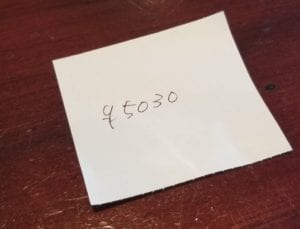
Don’t be surprised if you are in some hole in a wall place, trying out some amazing Japanese food, and when you get your “check”, its just a small piece of paper with a value on it instead of an itemized receipt.
If you are worried about it, just pay attention to the prices when you order. But trust me, it’s Japan, they are more likely to run after you down the street if you accidentally leave money on the table (yeah, there’s no tipping, and I’ve seen that happen for a few yennies!), then to overcharge you.
However, as I said. If you do need something a bit more formal for work record purposes, use option 3 above.
Sometimes you don’t have to ask for the bill in Japan!
At most ramen restaurants, you will pay upfront at a vending machine. While at some sushi-go-round restaurants you’ll have to ask for the bill in Japanese, there are some kaitenzushi that you play a game with your plates and bring your table marker to the front after the fact as your table has already “counted” you!
If you are at what Japan calls a “family restaurant” like Denny’s or even some izakaya, many times your running total will be left at the edge of your table in a smallholder.
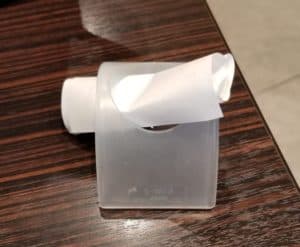
If I were to rank in the order of lease intimidating, this would be it!
Pin this for later
There you have it. More ways than you could possibly need for how to ask for the bill in Japanese. Start listening for them when you are out and about Japan though. Which way to ask for the bill in Japanese do you hear the most?
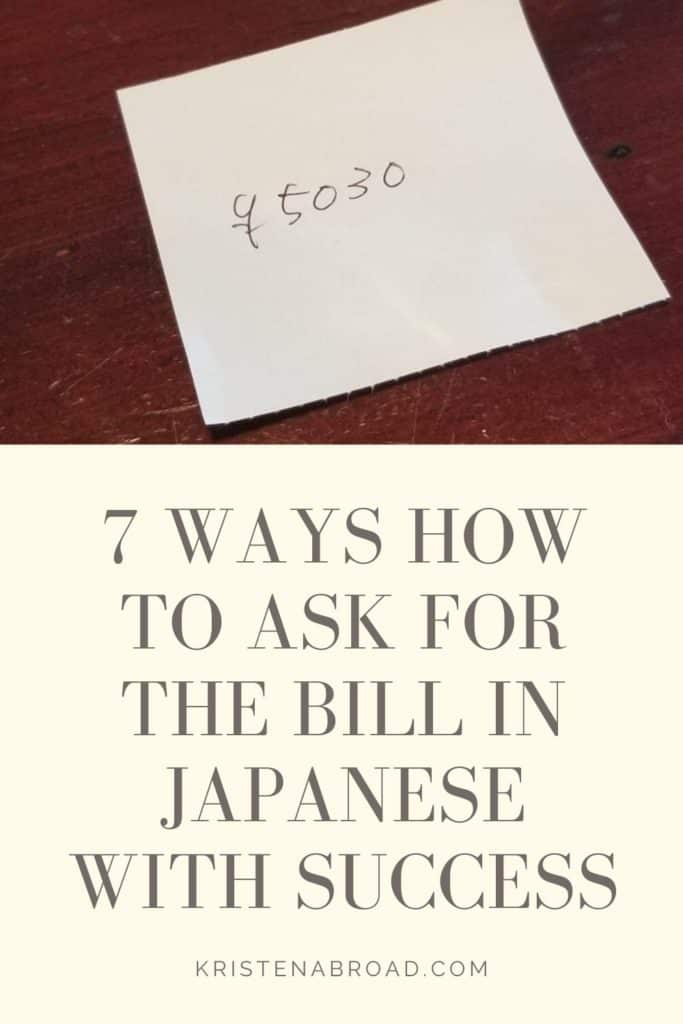
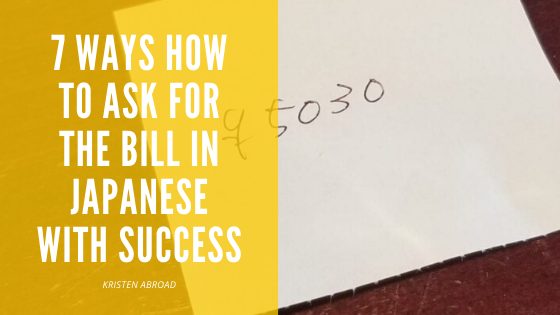
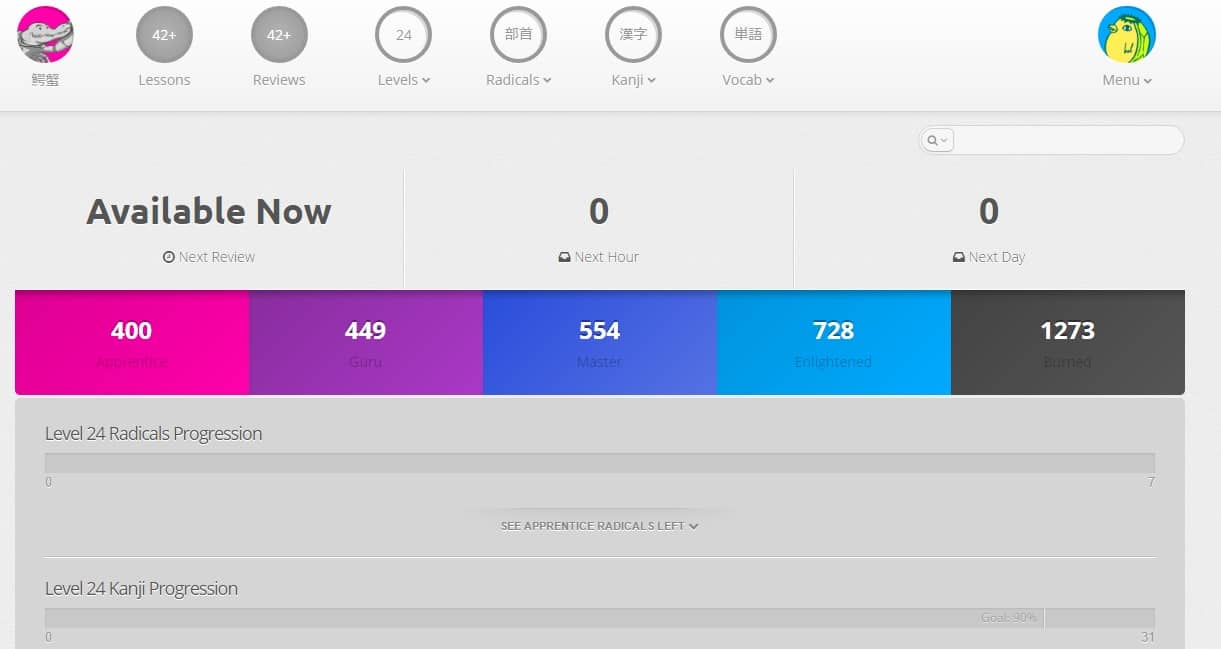
Super useful and clear. Thank you!
I’m so glad! 🙂